Motorola One Zoom Review
Motorola One Zoom Review
The Motorola One Zoom is the latest phone aiming to rob the Pixel 3a of its crown as king of the mid-rangers
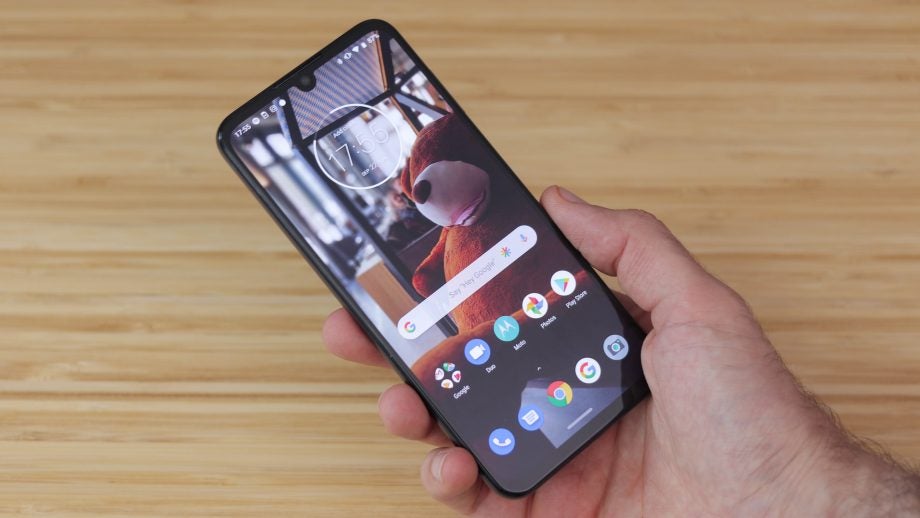
Verdict
The Motorola One Zoom combines a great camera, screen and battery with a mid-range-specced phone. Its camera is loaded up with three focal lengths and manual controls, as well as a capable Night Vision mode. It easily makes it through a day and thanks to that screen, it shines brightly throughout. The Zoom isn’t a phone for anyone who needs maximum power for their buck – for this, a gaming phone like the Black Shark 2 would be ideal. Neither is it the best-looking phone for the price: that would be the Xiaomi Mi 9T Pro.
Pros
- Almost a flagship camera
- Clean, stable UI
- Fantastic battery life
Cons
- Less powerful than some competitors
- Has a mono speaker
- Good, but not great, design
Key Specifications
- Review Price: £379
- Quad camera: 48-megapixel main, 8-megapixel telephoto, 5-megapixel ultra-wide 117-degree
- 25-megapixel front camera dew-drop notch
- 6.4-inch FHD OLED screen
- 4000mAh battery with 15W Turbocharger
- 128GB storage
- Integrated fingerprint reader under screen
- Snapdragon 675 CPU, 4GB RAM
What is the Moto One Zoom?
Mid-range phones are always a balancing act – what should manufacturers scrap to hit an affordable price? In the case of the Moto One Zoom, Motorola loaded it up with mid-range power, but virtually everything else about it is excellent on paper.
The One Zoom’s screen is an ample 6.4-inch OLED panel with Full HD+ resolution, similar to that of the OnePlus 7. There’s plenty of battery power – 4000mAh – and, with 128GB storage and support for a microSD card, you won’t be filling it up anytime soon.
The Zoom also has four cameras around the back, more than any other phone in its price range, and they’re well-specced too, with big pixel counts and optical image stabilisation – it’s looking good for Moto’s latest smartphone so far.
Moto One Zoom Design – Premium, but what’s with the light-up bump?
The Motorola One Zoom looks and feels good, but not excellent, with a few design choices we don’t love – mainly concerning that bump on the back.
It’s a well put-together device, with a metal frame; matte, rounded sides and corners; a frosted, brushed, curved glass back; and a big, bold OLED display with a respectable 85% screen-to-body ratio.
That said, it also has what seems like the world’s biggest squircle of a camera bump on the back, which dominates the top half. In addition to housing four cameras, the bump also frames a Motorola logo which lights up. Unnecessary? Yes. Cool anyway? Not really, but that’s just my opinion.
Related: OnePlus 7T
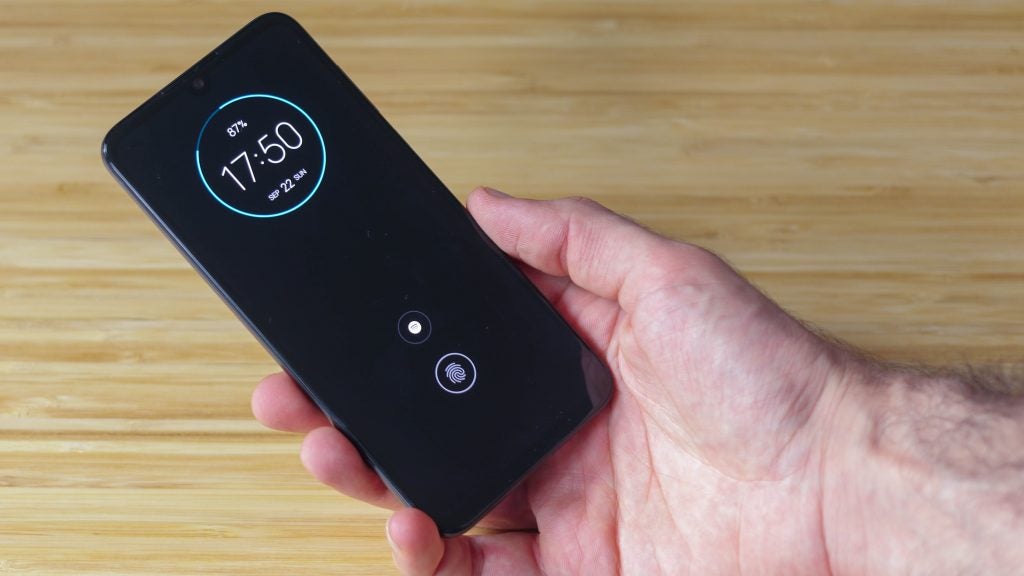
Now that I’ve got my moaning out of the way, everything else about this phone’s design is pretty darn decent.
At the bottom of the phone is a USB-C port and at the top is a loudspeaker and SIM tray, which takes two SIM cards, or one SIM card and one SD card. All the phone’s buttons – a power button and volume rocker – are on the right.
The matte finish on the back of the Motorola One Zoom means it doesn’t cling onto fingerprints as readily as phones like the Samsung Galaxy S10, and it also ships with a case in the box, just like the G7 Plus and G7 Power.
One highlight which isn’t on too many sub-£400 phones is an under-display fingerprint scanner, as found on the Xiaomi Mi 9T Pro, and it works well. The Motorola One Zoom also unlocks with facial recognition.
Motorola One Zoom Screen – A big bright OLED with a little inconspicuous notch
The Motorola One Zoom’s screen looks very good indeed with its Max Vision OLED tech with Full HD+ resolution of 2340 x 1080. At 6.4 inches, it’s also big enough to deliver an immersive screen experience without being unmanageable like the 7.2-inch Mate 20 X.
With over 400 pixels-per-inch (ppi), while the Motorola One Zoom isn’t as sharp as QHD+ phones like the OnePlus 7 Pro, its resolution competes head-on with the likes of the Honor 20 and Honor 20 Pro, and beats out the much more expensive iPhone 11, which clocks in at 326ppi.
Viewing angles are very good, as is max brightness, but, with no HDR support, it doesn’t quite stack up on paper to the Mi 9T Pro. Still, gaming on its big display is as immersive as it needs to be for the price, and colour accuracy is reliable.
Dive into the settings, select Display, followed by Colors, and you can choose between three profiles – Natural, Boosted and Saturated – which is a nice bonus.
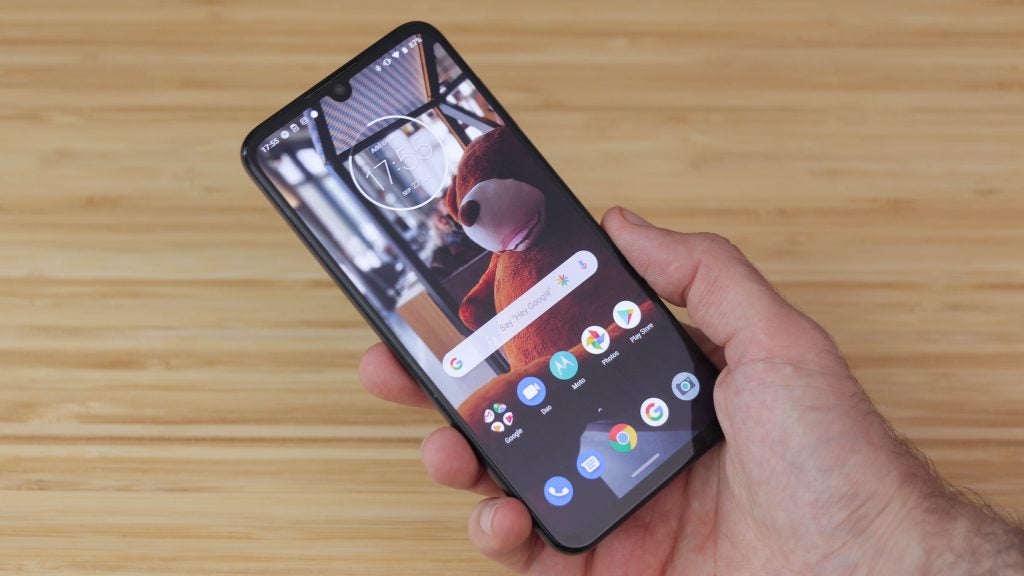
Motorola One Zoom Performance – Flagship performance across the board
Motorola is known for flooding the market with mid-rangers, so it’s little surprise that the Motorola One Zoom falls under that umbrella and isn’t a powerhouse, despite its flagship elements. While we found only occasional slow-down in the real world, benchmarks highlight the phone’s limitations more noticeably.
With its Snapdragon 675 processor coupled with 4GB RAM, the phone betters its G7-series siblings, with the G7 Plus scoring just over half as well as the Zoom, but when stacked up against the Snapdragon 855-laden Xiaomi Mi 9T Pro, it scores a fair bit worse. That said, it does outperform the Google Pixel 3A – another mid-ranger that places its focus on delivering flagship imaging for a similar price – in certain benchmarks.
| Motorola G7 Plus | Pixel 3A | Honor 20 | Motorola One Zoom | Mi 9T Pro | |
| AnTuTu | 116,646 | 158,252 | 288,366 | 148,073 | 348,188 |
| Geekbench 4 (single) | 1321 | 1623 | 3260 | 2347 | 2949 |
| Geekbench 4 (multi) | 4940 | 5157 | 9674 | 8915 | 9389 |
Keeping things simple, the Motorola One Zoom is available with one storage capacity version, 128GB, which is enough space for all but the most demanding file, app and game hoarders. Additionally, it can take microSD cards up to 512GB.
Motorola One Zoom Battery life – Turbo power all day and night
Motorola has thankfully loaded up its One Zoom with a big 4000mAh battery – a welcome bump up when compared to the 3500mAh Motorola One Action and One Vision.
The screen-on time is excellent, dropping by about 8% after an hour of streaming at full brightness, and even with gaming, hotspotting and a fair bit of photo taking, it still had plenty of power left in the tank after a full day.
The Moto One Zoom doesn’t offer wireless charging, but it does charge relatively quickly: Turbo Charge at up to 15W powers it from 0-100% in under an hour and a half, and it ships with a charger in the box.
With Android 9’s Adaptive Battery feature, the phone also limits app battery usage intelligently to save juice, and there’s also a battery saver that limits background processes onboard too.
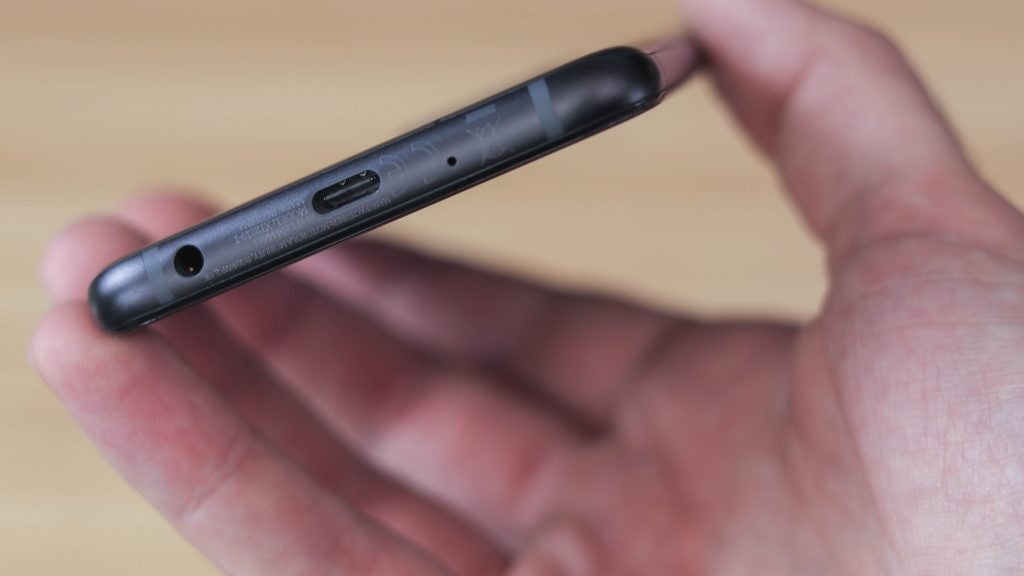
There’s a USB-C port on the bottom
Motorola One Zoom Software – Smooth, stock and simple
The Motorola One Zoom has a very stock Android 9 interface, with home screens, an apps drawer and a pull-down notifications bar, complete with quick toggles.
It’s unsurprisingly nice and smooth when swiping through, though frame rates aren’t as silky smooth as in phones with a bit more clout, like the Honor 20 or Mi 9T Pro. The Google feed screen is displayed to the left of the home screen and there’s minimal Motorola customisation beyond that found in the Moto app.
Here, you can control familiar Motorola gesture customisations, like firing up your phone’s flashlight with a karate chop or twisting your wrist to activate the camera. These have been around for years since the Moto X and are still an excellent addition to the Moto mix.
There’s also an almost always-on display that fires up when the phone detects movement nearby, or if you tap its screen. It shows previews of messages and alerts, and also enables an expanded peek at them, saving you having to unnecessarily unlock your phone.
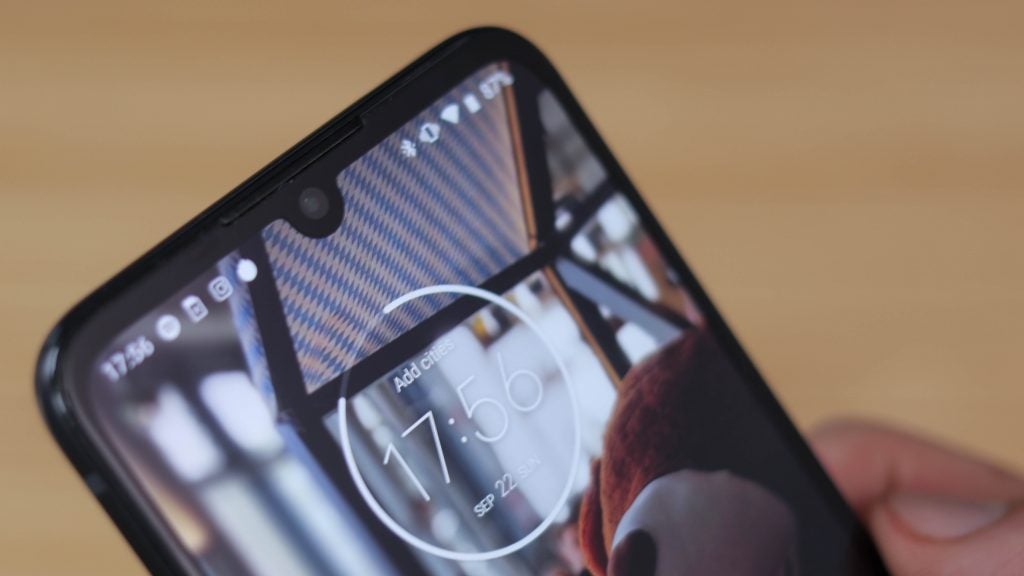
Moto’s version of Android is very clean
One thing I wish Motorola did adopt is standard Android 10 gestures, which are probably on their way in upcoming Moto phones running Google’s freshest mobile OS. Rather than edge-swipes taking you back and a swipe up from the bottom acting as the home button, the Motorola One family’s gesture input is limited to a slightly clunky pill in the bottom centre of the display. Alternatively, you can go old-school and opt for a traditional navigation bar.
Motorola One Zoom Camera: Quad-camera phone, dual-camera price
The Motorola One Zoom’s quad-camera has a similar set-up to that found on the Samsung Galaxy S10 5G, with primary, telephoto, ultra-wide and depth-sensing cameras all interplaying to create one of the most versatile smartphone camera systems around. It gets you closer to the action for things like gigs or kids’ plays, and nice and wide for big all-encompassing landscapes.
The main camera is the 48MP (f/1.7) primary camera with optical image stabilisation (OIS) and phase detection autofocus (PDAF). The zoom, or telephoto component, comes in the form of an 8MP (f/2.4) which has a 3x optical zoom and OIS. The widest-angle camera, with an equivalent focal range of 13mm, is the 16MP (f/2.4), while the depth-sensing camera is 5MP, though doesn’t grab shots.
The primary sensor may be 48MP, but it snaps pictures at 12MP by default. This lower-resolution default size benefits from auto-HDR, scene detection and pixel binning, a technique that combines information from multiple pixels to create a better, albeit lower-res, image.
In good light without too much shadowing, the Motorola One Zoom captures a good amount of detail, though by comparison with top-tier flagships like the iPhone 11 Pro Max, doesn’t quite have the dynamic range, holding it back from actual flagship status thanks to what looks like artificially elevated contrast.


Pinch into shots you’ve taken and things still hold up well for the price. The auto-HDR feature prevents challenging scenes from creating black or white spots in highlights and lowlights, even if the results could pick up a bit more nuance, and with Manual mode offering 48MP shooting, you can grab images bursting with information when the lighting is on your side.
There are also plenty of shooting options, including Portrait, Cutout, Spot Colour, Night Vision, Cinemagraph, Panorama, Live Filter, Slow Motion and Timelapse.
In low light, the Motorola One Zoom does a very mediocre job – until you fire up Night Vision mode, which it will prompt you to do. Once active, it can see in the dark with a long exposure like the Huawei P30 and Pixel 3 series. Night Vision isn’t as good as automatic mode on the P30 Pro or the iPhone 11 Pro Max, pulling up more noticeable mottling when you pinch into shots taken in low light. That said, it’s better than almost anything else at this price.



The 3x zoom telephoto camera gets you nice and close to the action and does a fair job in general, provided you don’t shoot RAW or pinch into the shot too much. RAW images captured on the zoom camera pull up a dotted patterning across the whole picture that goes beyond noise, and detail just doesn’t hold up when you pinch right in on shots. For casual viewing on the phone, though, it’s competitive if you shoot in automatic mode.
As for the wide camera, it too does a decent job in good light, taking advantage of the auto HDR feature. That said, when the lights go down, neither it nor the telephoto camera are engaged, with any Night Vision zoom being digital.
One final strike against the camera is the time it takes the pictures to process when you look at your shot straight after capturing it. It’s just a second or two, and it’s kind of cool watching the image go from a 4/10 to an 8/10 just like that. We can’t help but wonder, however, would it have left us waiting after every photo we took if the phone had a faster chipset?
With a 25MP (f/2.0) front camera, the Motorola One Zoom isn’t a selfie slouch either when it comes to pixels, and while it captures plenty of detail with modes to keep you entertained – most usefully, Portrait mode – it struggles with white balance in artificial light.
The Zoom captures video at up to 4K resolution at 30fps on the rear camera and image stabilisation is impressive, as is detail at the highest settings. Low-light footage isn’t great with noise creeping in quickly – though that’s the case with most phones, to be fair, even flagships.
Should I buy the Motorola One Zoom?
If you need a good camera that gives you a lot of versatility for under £400 and want stock Android, then absolutely – the Motorola One Zoom is as good as it gets. It’s got a well-built chassis, even if it isn’t the best-looking phone on the block owing to that camera bump. The One Zoom’s screen and battery life are also great, and the beloved headphone jack is accounted for, too.
If stock Android isn’t a must-have for you, the Xiaomi Mi 9T is a better device overall. It has a lot more power, better display, much better design, a similar camera set-up and faster charging, not to mention great battery life.
The Motorola One Zoom combines a great camera, screen and battery with a mid-range-specced phone. Its camera is loaded up with three focal lengths and manual controls, as well as a capable Night Vision mode. It easily makes it through a day and thanks to that screen, it shines brightly throughout.
The Zoom isn’t a phone for anyone who needs maximum power for their buck – for this, a gaming phone like the Black Shark 2 would be ideal. Neither is it the best-looking phone for the price: that would be the Xiaomi Mi 9T Pro.
Verdict
The Motorola One Zoom is something of a safe bet – not quite the best at anything, but very good, at least, at everything.
How we test phones
We test every mobile phone we review thoroughly. We use industry standard tests to compare features properly and we use the phone as our main device over the review period. We’ll always tell you what we find and we never, ever, accept money to review a product.


